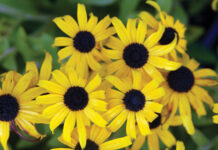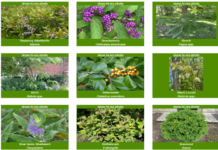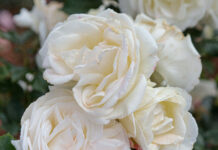By Christine Menapace
After eight long years, landscapers will soon be able to answer “yes” to clients who want to bring back Impatiens to their landscapes. With a limited launch this year and a full launch in 2020, new Beacon™ Impatiens from PanAmerican Seed offer high resistance to the downy mildew that decimated this popular plant back in 2011. They come in six core colors: bright red, violet, salmon, coral, orange, and white; as well as two mixes.
“We’ve been very happy,” Beacon global product manager Lisa Lacy tells Turf. “For the landscaping market and globally there’s been a lot of loss… it was a long road bringing it back… it was a lot of diligence and cross testing… over a million plants were screened.” Of course, the only goal wasn’t just disease resistance, “it also had to be a good looking Impatiens,” notes Lacy, who experienced the heyday, decline, and now reintroduction of the Impatiens market. “I feel very fortunate to have been a part of this… it’s a product gift.”

Does she expect Impatiens to reach their former popularity? She says it’s a good question and one that’s been asked a lot. “In general the feedback has been high interest,” she says. Beacon is easy to grow, and consumers already know what to do with Impatiens, she says. “There’s no learning curve.”
Once a favorite of landscapers and clients alike, the shade-loving flower Impatiens walleriana fell victim to Plasmopara obducens, a water mold that led to a widespread outbreak of Impatiens downy mildew (IDM), about eight years ago. Unfortunately, IDM, which is airborne and can overwinter, leads to plant collapse and it hit worldwide, spreading quickly. With little chance of planting Impatiens wallerina with confidence, growers, landscapers, and gardeners alike abandoned it for other colorful shade alternatives like Begonias, Coleus, and New Guinea Impatiens (which aren’t susceptible to IDM).
PanAmerican Seed, however, dedicated itself to bringing back this garden staple with breeding efforts and collaboration that spanned the globe in search of a disease-resistant strain. “Beacon Impatiens is truly an effort years in the making. Since the early days of the devastating disease, greenhouses have been waiting for the chance to bring Impatiens back,” says Anne Leventry, president of PanAmerican Seed. Collaborating on the project was a team in The Netherlands, led by breeder Ruud Brinkkemper, and a crew in the United States consisting of Lacy, plant pathologist Dr. Colleen Warfield, and many others.

“With a plant structure, flowering time and flower size that is similar to existing Impatiens series, Beacon is easy to incorporate into production planning,” says Lacy. “There’s no special plant culture required for Beacon to be successful.” It should be noted too that “high resistance” is not just a marketing term. It’s a designation from the International Seed Federation that the “plant highly restricts the growth and/or development of the pathogen/damage it causes under normal pressure…” It’s also a step above “intermediate resistance.”
What about all those colors Impatiens once had? Lacy laughs. “We asked ourselves, ‘How many colors needed to come back for a launch?’ Super Elfin had about 22 or 23 colors… we’re definitely planning to add colors, more pink, rose, lavender.” Given the new disease resistance, are there breeding restrictions in terms of color? While the market will no doubt guide color decisions, Lacy comments, “Rudd [the breeder] doesn’t think there’s any reason we can’t get back to a whole range of colors.” That’s good news for those with exacting clients!

As mentioned, a limited supply of Beacon Impatiens is currently available, with a full launch next year. Visit this link for a list of “Where To Buy” locations.
For a list of PanAmerican plants that excel in landscape applications, as well as other landscaper-specific help, visit www.panamseed.com/landscape.aspx. It offers: a link to plant suppliers; a regional plant selector; a plant calculator that determines the number of plants needed per square foot; as well as a customizable “Landscape Sell Sheet” to help clients choose suitable plants.
Menapace is a professional freelance writer and editor with over 25 years of experience in publishing, journalism, copywriting, and marketing.











![[VIDEO] Dickies®: Discover Workwear That’s Anything But Uniform](https://turfmagazine.com/wp-content/uploads/2023/06/1647663814-4b1a2a7742790a9b1e97a3b963477850192e1d6a9dfba9b07214a77bae25d6e3-d-218x150.jpg)




























![[VIDEO] Dickies®: Discover Workwear That’s Anything But Uniform](https://turfmagazine.com/wp-content/uploads/2023/06/1647663814-4b1a2a7742790a9b1e97a3b963477850192e1d6a9dfba9b07214a77bae25d6e3-d-324x160.jpg)